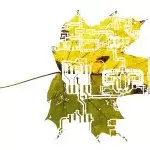
Artificial intelligence is a new development in the technology world that is certain to transform society as a whole. Even more than the internet, or smartphones, or even the automobile, AI offers new capabilities that may have an impact on humankind on the scale of fire or electricity.
That's a development that has many sustainability experts excited… and also worried. Smarter machines working on more efficient solutions to the many environmental and social sustainability issues are a welcome development. But there's no guarantee that those machines will be used to solve those problems. Instead, they may just create more.
Either way, it's going to be critical for sustainability experts to have a good grasp of what artificial intelligence is and what it can do.
A Global Population Is Facing Current Environmental Sustainability Issues
At heart, sustainability is a problem of matching production to consumption. Consume more than the planet can produce over the lifetime of the species, and sooner or later you've got trouble.
In many ways, sooner is now. Either directly or indirectly, humanity:
- Burns more fossil fuels than it can without cooking ourselves off the planet
- Creates and throws out more plastic than ecosystems can absorb
- Wastes enormous amounts of food while people starve
- Mines and uses more rare earths than reserves can handle
- Manufactures and pollutes sensitive ecosystems with more toxic chemicals than they can fend off
There's little sign these trends are slowing down or reversing. Even as the bill comes due for our excesses, the economy is throttled up on building more, encroaching farther, and consuming more than ever.
The Complex Relationship of AI and Environmental Sustainability
 At first glance, AI might seem like it's just more of the same out-of-control technological progress that is causing sustainability problems in the first place. The heavy costs of training modern Large Language Models (LLMs) has a carbon footprint that seems entirely out of scale to their benefits.
At first glance, AI might seem like it's just more of the same out-of-control technological progress that is causing sustainability problems in the first place. The heavy costs of training modern Large Language Models (LLMs) has a carbon footprint that seems entirely out of scale to their benefits.
A UMass life cycle assessment of the training regime for several of the most common large AI models found that the process can emit more than 626,000 pounds of CO2 from the heavy electrical demands.
The carbon footprint of AI today has a strong negative impact on the environment.
This has caused many people to lump AI in with Bitcoin and other cryptocurrencies as a large-scale sustainability villain. All the power and cooling costs come back to unnecessary uses of precious fresh water and the creation of dangerous emissions.
Yet the picture becomes more complicated when you weight the possible future uses of AI for sustainability. In fact, both technology generally and AI in particular offer some paths forward to a more sustainable future.
How Governments, Nonprofits, and Business Are Using AI for Environmental Sustainability
In fact, it's not just the future where AI will find roles in sustainability efforts. It's already happening. In dozens of different fields, in numerous ways, AI is creeping into sustainability projects and making them better and more efficient.
Sustainability and AI are working hand in hand in areas such as:
AI for agriculture and food sustainability
Productivity and sustainability in agriculture are a big focus for sustainability efforts. AI is kicking in to improve yields, monitor the spread of disease, and optimize growing patterns.
Machine learning improvements in the field of computer vision are already sharpening the focus of satellites tracking deforestation and crop health. Using imagery gathered over decades, predictive ML can identify areas at the greatest risk of further losses to healthy trees and aim authorities in the direction to prevent it. Similar technology can evaluate crop health and maturity from on high.
AI global warming solutions
 Artificial intelligence isn't a big air conditioner can can't directly turn down the temperature. But it can provide new data and insights to help get emissions that drive global warming under control. A new AI-driven satellite called MethaneSAT is due to launch and detect between 80 and 90 percent of global oil and gas production emissions. That will allow authorities to identify the biggest sources of greenhouse gases and pursue solutions to cap or capture them.
Artificial intelligence isn't a big air conditioner can can't directly turn down the temperature. But it can provide new data and insights to help get emissions that drive global warming under control. A new AI-driven satellite called MethaneSAT is due to launch and detect between 80 and 90 percent of global oil and gas production emissions. That will allow authorities to identify the biggest sources of greenhouse gases and pursue solutions to cap or capture them.
Artificial intelligence and sustainability in development goals
The uses of AI for sustainable development also fall largely into the world of simulation. AI models trained on chemical and molecular bonding can quickly generate new ideas for compounds and materials that may be more sustainable to produce and more environmentally friendly in new structures than plastic or concrete.
Environmental AI uses in feedback loops
 Machine learning for environmental science is playing a role not just in digesting huge volumes of critical information. It can also help gather that information as part of the monitoring net behind the Internet of Things (IoT).
Machine learning for environmental science is playing a role not just in digesting huge volumes of critical information. It can also help gather that information as part of the monitoring net behind the Internet of Things (IoT).
Small, smart sensors that are plugged into the internet, the IoT can incorporate everything from groundwater monitors to temperature sensors to infrared cameras. It's part of the net that is pulling in all the data that sustainability experts use to make their recommendations. But it's far too much data, coming in too fast, for any human to absorb.
So another use for artificial intelligence in environmental science is to actively monitor and learn from those sensor nets. It can parse and report on the data, and even act as a real-time control system for functions like crop watering, forest fire alerts, or pollution spill alarms.
How AI can help sustainability in construction and building materials
AI is already hard at work in materials science coming up with newer and greener kinds of compounds to build structures and devices. For example, researchers in England have used AI's broad ability to look at the vast chains of chemical relationships combined with expert insight to identify at least four entirely new materials that will create more efficient battery technology.
Other researchers are using AI in materials science to identify compounds that are more effective in carbon capture. Vast plants may eventually suck carbon directly from the air with more efficient absorption materials to lock it away.
Working Toward Green AI and Sustainable Development
 There are efforts within the field to mitigate artificial intelligence pollution and reduce AI environmental impact. Many AI scientists recognize that the current costs of model training are unsustainable on several fronts. Although the high AI carbon footprint from compute time will drop away as the grid becomes fueled by more sustainable energy sources, there is still artificial intelligence environmental impact from cooling. And the time to train such models is a brake on innovation and adoption.
There are efforts within the field to mitigate artificial intelligence pollution and reduce AI environmental impact. Many AI scientists recognize that the current costs of model training are unsustainable on several fronts. Although the high AI carbon footprint from compute time will drop away as the grid becomes fueled by more sustainable energy sources, there is still artificial intelligence environmental impact from cooling. And the time to train such models is a brake on innovation and adoption.
So AI sustainability is getting a boost from inside the house.
Green AI is the movement among AI researchers are exploring various ways to monitor, tune, and otherwise optimize AI training to reduce energy consumption.
A meta-study in 2023 found that reported green AI energy savings of up to 115 percent could be achieved in some cases, with 50 percent being common.
On the development front, big companies are already working on pre-trained models that can be run on devices as basic as phones… a huge energy savings that can push AI insights out into the field at low costs.
Where AI and Sustainability Are Already Having a Big Impact
 Small AI tools in specific applications are already helping the environment in various ways around the globe.
Small AI tools in specific applications are already helping the environment in various ways around the globe.
Recycling is an important concept in sustainability, but it's also one of the most difficult to put into practice. Separating the waste stream for efficient recycling operations is something people aren't very good at.
AI, however, is already on the job. In 2022, an AI-driven tracking system identified 32 billion waste items in 67 different categories and routinely finds nearly 90 tons of recyclables being sent to landfills each week. If you put that ability together with robotic sorting systems-another promising AI development area-suddenly you need less human input and reap the benefits of more recyclables recovered from the waste stream.
Analytics Will Be Where the Real Environmental Impact of AI Happens
The real significant impacts of AI in sustainability today, though, comes through analytics.
While robotics and generative systems aren't quite production ready in many cases, analytic AI, grown from the maturing field of data science, is already a workhorse. Scientists have been training models to detect plastic density in oceanic water columns, for instance. This provides environmentalists with ways to target a problem they already knew was occurring, but couldn't necessarily pinpoint.
AI is also being used to provide more fine-grained models of impacts from climate change. It can show what areas and communities are likely to be impacted by climate events and what the threats are. That's allowing governments and businesses to better prepare for and avoid disasters.
Future Prospects and Challenges for Artificial Intelligence and the Environment
 So what does the future hold in using AI for sustainability? In part, it's limited only by the imagination. When you pair the kind of reasoning and analytical skills that AI can bring to the table with known solutions to environmental challenges, you can build technology that affects the environment in more positive ways.
So what does the future hold in using AI for sustainability? In part, it's limited only by the imagination. When you pair the kind of reasoning and analytical skills that AI can bring to the table with known solutions to environmental challenges, you can build technology that affects the environment in more positive ways.
That can lead to everything from drone-powered re-seeding projects to optimizing water use in crop irrigation through analysis of satellite imagery. Price Waterhouse Coopers (PwC) estimates that AI applications in agricultural alone can potentially reduce emissions by up to 160Mt by 2030. At the same time, they promise greater productivity, offering more food to a hungry planet while using less resources.
Efficiency of that sort is music to the ears of major corporations as well as environmentalists. Getting more for less is good for the bottom line as well as for the planet. PwC estimates that the use of AI in environmental applications can potentially offer around a 4 percent bump to global GDP.
Overcoming Challenges With AI and the Environment
 Of course, the role of AI in environmental science won't be entirely rosy. Great challenges remain in making the calculation of foundation models more efficient. And there are no guarantees that AI-driven solutions will magically be good for the environment. Unscrupulous governments and corporations can choose to use AI to support industries that lead to more waste and pollution. Regulation and enforcement will be necessary to ensure such a powerful tool is used responsibly.
Of course, the role of AI in environmental science won't be entirely rosy. Great challenges remain in making the calculation of foundation models more efficient. And there are no guarantees that AI-driven solutions will magically be good for the environment. Unscrupulous governments and corporations can choose to use AI to support industries that lead to more waste and pollution. Regulation and enforcement will be necessary to ensure such a powerful tool is used responsibly.
At the end of the day, it's in everyone's interest to seek more sustainable ways of living. Earth represents all the resources humanity has; squandering them isn't in the long-term interest of any country or society.
AI is also likely to be critical in the ultimate sustainability exercise: tracking and mitigating global climate change. Ultimately, there isn't much point in every other sustainability effort if the planet can't be kept from cooking humanity into dust.
AI and climate change may be coming together at the perfect moment in history, though. As the planet cooks off past 1.5�C in warming, new AI tools may be the best way to show the positive impacts of technology on the environment.
Environmental Problems and Solutions Ultimately Come Back to Humanity
 Only humans can solve environmental problems. AI is only a tool, and a tool is only as good as the person using it. So getting the right education is the first step in learning how artificial intelligence can help the environment.
Only humans can solve environmental problems. AI is only a tool, and a tool is only as good as the person using it. So getting the right education is the first step in learning how artificial intelligence can help the environment.
Environmental science degrees are where people learn about sustainability tools and how to use them. Increasingly, that will include artificial intelligence and machine learning technologies. The application of AI in environmental science is becoming part of the curriculum in most degrees available today.
The field of artificial intelligence, too, is starting to pick up on how sustainability and AI can be connected. Degrees like a Master of Science in Intelligent Systems Engineering can be taken with an Environmental Engineering track that applies AI tools to sustainability issues.
For graduates who have already earned degrees in environmental engineering, programs like a Graduate Certificate in Artificial Intelligence can build on core STEM capabilities to develop ML and AI skills to fill roles in the future of sustainability.
It's a big field and there will be many different ways to apply that education. All of them are critical. Only with the most up-to-date training and preparation will you be able to lead humanity to a more sustainable future.
- The Role of Artificial Intelligence in Environmental Sustainability - April 11, 2024
- The Role of AI in Tackling Climate Change - April 9, 2024
- VW Partners With Conservation Fund and 3Degrees to Manage and Restore Redwoods - June 19, 2015
Related Articles
Featured Article

Environmental Microbiology & GIS





